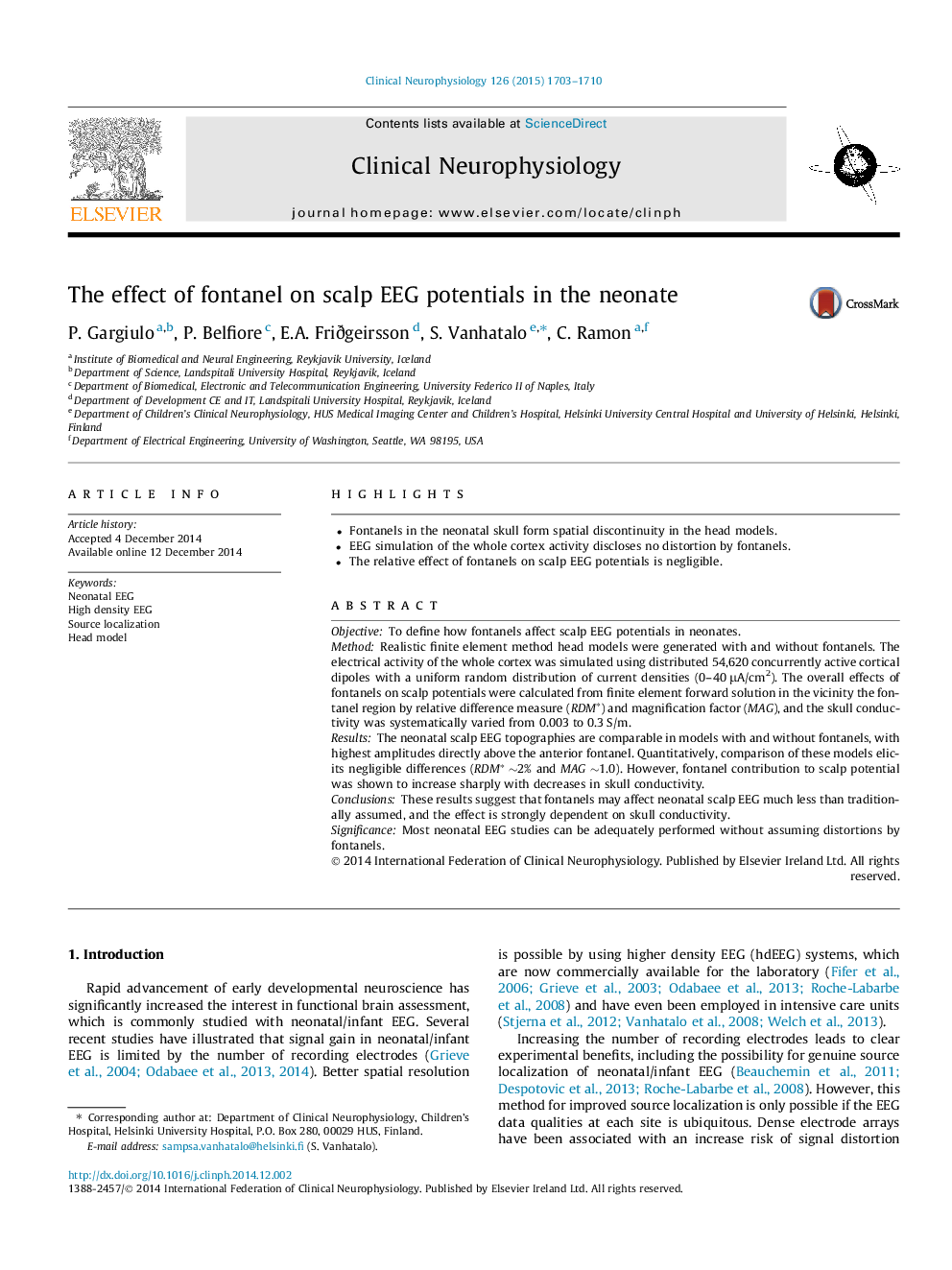| Article ID | Journal | Published Year | Pages | File Type |
|---|---|---|---|---|
| 3042818 | Clinical Neurophysiology | 2015 | 8 Pages |
•Fontanels in the neonatal skull form spatial discontinuity in the head models.•EEG simulation of the whole cortex activity discloses no distortion by fontanels.•The relative effect of fontanels on scalp EEG potentials is negligible.
ObjectiveTo define how fontanels affect scalp EEG potentials in neonates.MethodRealistic finite element method head models were generated with and without fontanels. The electrical activity of the whole cortex was simulated using distributed 54,620 concurrently active cortical dipoles with a uniform random distribution of current densities (0–40 μA/cm2). The overall effects of fontanels on scalp potentials were calculated from finite element forward solution in the vicinity the fontanel region by relative difference measure (RDM∗) and magnification factor (MAG), and the skull conductivity was systematically varied from 0.003 to 0.3 S/m.ResultsThe neonatal scalp EEG topographies are comparable in models with and without fontanels, with highest amplitudes directly above the anterior fontanel. Quantitatively, comparison of these models elicits negligible differences (RDM∗ ∼2% and MAG ∼1.0). However, fontanel contribution to scalp potential was shown to increase sharply with decreases in skull conductivity.ConclusionsThese results suggest that fontanels may affect neonatal scalp EEG much less than traditionally assumed, and the effect is strongly dependent on skull conductivity.SignificanceMost neonatal EEG studies can be adequately performed without assuming distortions by fontanels.
